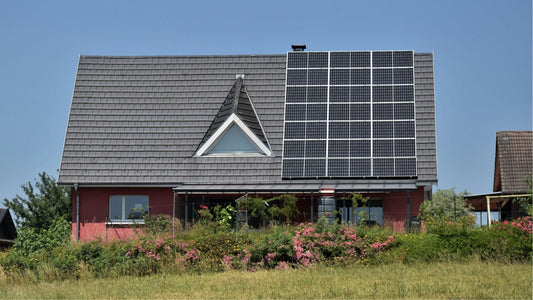Are you ready to harness the power of the sun and take control of your energy consumption? Installing solar panels at home is an eco-friendly and cost-effective way to generate electricity while reducing your carbon footprint. In this comprehensive guide, we'll walk you through the detailed process of setting up rigid solar panels safely and efficiently. Whether you're a seasoned DIY enthusiast or a beginner, follow these steps to make your solar installation a success.
Why Choose Rigid Solar Panels?
Rigid solar panels, such as the ones offered by Rocksolar, provide exceptional durability and efficiency. These panels are constructed with a corrosion-resistant aluminum alloy frame, ensuring longevity and reliability even in challenging weather conditions. With various wattage options available, including 50W, 100W, 150W, and 200W, you can choose the right panel to meet your energy needs.
Tools and Materials You'll Need
Before you begin, gather the necessary tools and materials to ensure a smooth installation process. Here's a detailed list of items you'll need:
- Rigid solar panels: Choose the appropriate wattage for your energy needs.
- Mounting brackets or rails: Securely attach the panels to your chosen surface.
- Solar panel mounting hardware: Bolts, nuts, and washers for panel attachment.
- Drill and appropriate drill bits: For creating holes in mounting surfaces.
- Wrench and socket set: Tighten bolts and nuts securely.
- Level: Ensure proper alignment during installation.
- Screwdriver: For handling screws and connections.
- Sealant for waterproofing: Protect the edges of panels against water infiltration.
- Safety gear (gloves, safety goggles): Ensure your safety during installation.
Step-by-Step Installation Guide
1. Choose the Installation Location
Select a location on your property that receives ample sunlight throughout the day. Avoid shading from trees, buildings, or other obstructions that could diminish panel efficiency. Consider using a solar pathfinder or smartphone apps to identify the optimal position.
2. Install Mounting Brackets or Rails
Attach the mounting brackets or rails to the chosen surface using the appropriate hardware. Use a level to ensure the brackets are positioned horizontally and securely fastened. Follow the manufacturer's guidelines for spacing and placement.
3. Attach Solar Panels
Carefully place the rigid solar panels onto the mounted brackets or rails. Align the panels properly, ensuring they are level and oriented correctly. Use the provided hardware to secure the panels in place, avoiding over-tightening that could damage the panels.
4. Connect Wiring
Connect the wiring from the solar panels to the designated solar inverter. Follow the manufacturer's instructions carefully to ensure proper connections and safety. Be cautious when working with electrical components and adhere to recommended safety practices.
5. Waterproofing
Apply a suitable sealant around the edges of the solar panels. This creates a waterproof barrier that prevents water infiltration and extends the panels' lifespan. Ensure that the sealant is evenly applied and covers all exposed edges of the panels.
6. Test and Verify
Before fully securing the panels, test the system to ensure it's generating power correctly. Verify the connections, voltage, and overall performance. Monitoring equipment, such as a multimeter, can help you assess the system's functionality.
7. Secure Panels
Once you've confirmed the system is functioning properly, securely fasten the panels to the mounting brackets or rails using the provided hardware. Double-check the tightness of the fasteners to prevent any potential movement over time.
8. Monitor and Maintain
Regularly monitor the performance of your solar panels to ensure optimal energy generation. Clean the panels periodically to remove dust, debris, and other contaminants that could affect efficiency. Additionally, inspect the panels for any signs of wear, damage, or loose connections.
Benefits of Rigid Solar Panels
- Durability: Rigid panels are built to withstand various weather conditions, ensuring a long lifespan.
- Efficiency: Monocrystalline technology offers high energy conversion rates for maximum efficiency.
- Reliability: These panels require minimal maintenance and can provide consistent energy production for years.
- Customization: With different wattage options, you can tailor your solar system to your energy needs.
Setting up rigid solar panels is a rewarding DIY project that can significantly impact your energy consumption and the environment. By following these detailed steps and using high-quality products like those from Rocksolar, you're on your way to harnessing the power of the sun for a brighter, greener future.




